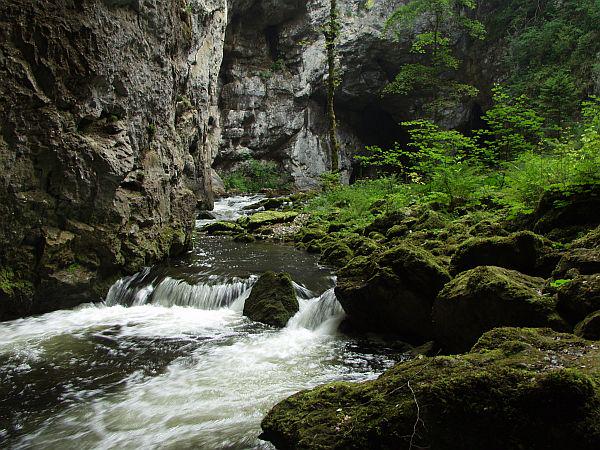
Slovenia's Inner Carniola is known for being sparsely populated and for hiding some of the country’s most interesting natural landscapes. Quite a few of them can be found in the Rakov Škocjan Regional Park and its unique limestone valley.
The terrain of the park was created over the millennia as waters of the Rak River eroded the local limestone. Eventually, a magnificent karstic cave was carved out, but sometime in the distant past, the cave’s ceiling collapsed, leaving behind a unique valley with two imposing gorges. Not all of the ceiling collapsed, however. Large arches of sold rock remained, forming two natural bridges, the larger 42 meters in height, the other five meters lower.
The narrow valley has its own microclimate and the area is mostly covered with dense, bush-like woodlands with interesting flora. Much of the park is regularly flooded, and natural springs are common in the valley.
Because the valley provided a natural haven, it had long been inhabited by humans. Various artifact dating back to the Paleolithic have been discovered, and it is now known that the valley was also inhabited by Illyrians before Slavs settled in the area.
A church named in honor of St. Cantianus, a Christian martyr, once stood near the larger bridge. It was built in the late 15th or the early 16th century and it gave the valley its name - Škocjan is derived from the Slovenian term for St. Cantianus. For many decades, the area around the church provided safety from the invading Ottoman Turks, but its fate was sealed when the last residents moved out of the valley and political reforms in the 18th century led to the abandonment of the church. Today, only ruins remain.
In 1949, the area was officially protected, soon becoming Slovenia’s first regional park. Because of its frequent flooding and the diverse plant life, it is also listed among world’s most important wetlands under Ramsar Convention. A trail leads visitors to most of the interesting sights, and the valley is even the home to a small hotel. For the most part, however, Rakov Škocjan remains well of the tourist track, rewarding its visitors with an inspiring landscape - and plenty of solitude.


































































